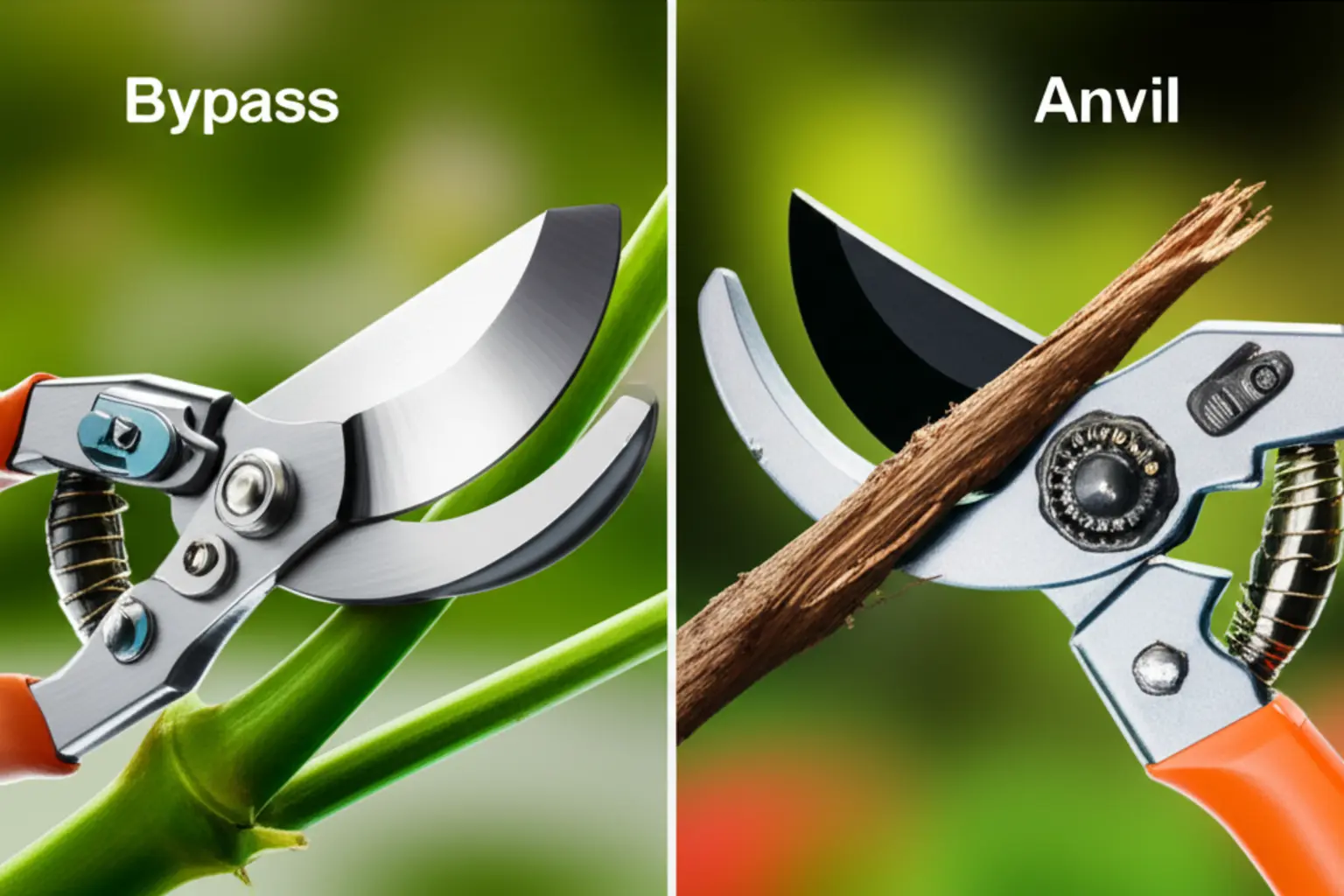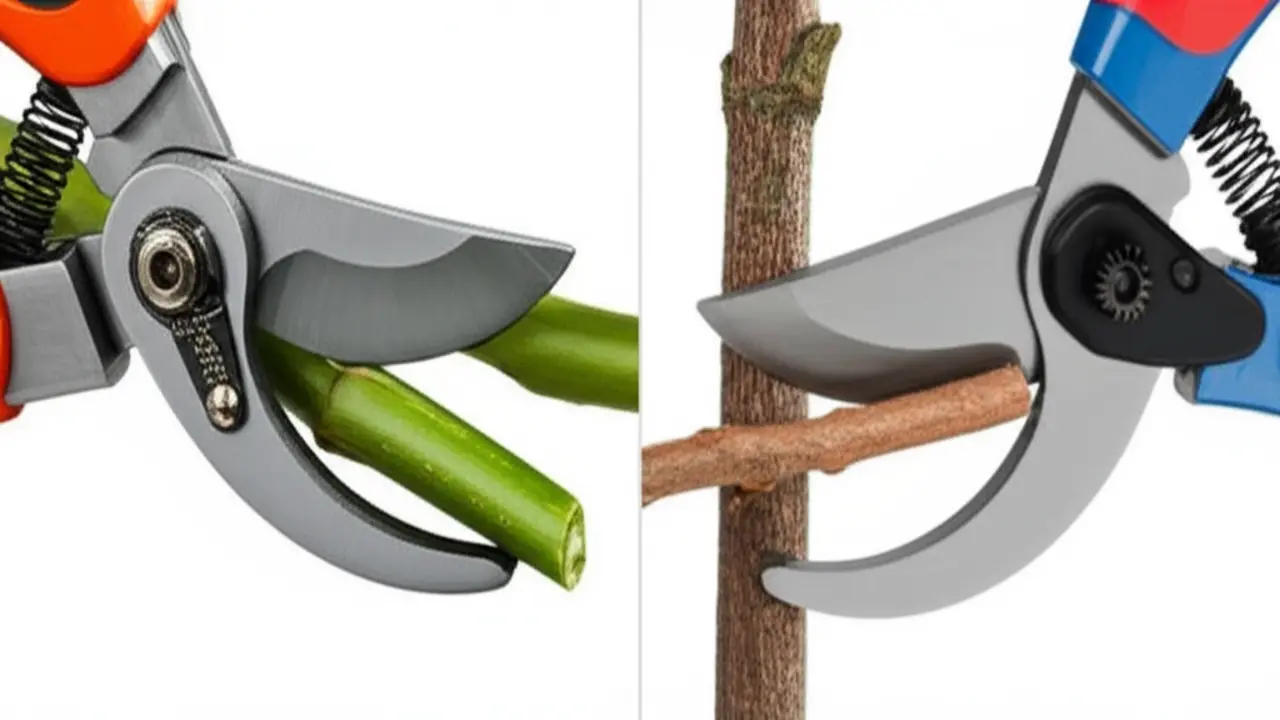
1. Understanding the Core Mechanisms
Bypass pruning shears operate with a scissor-like action. A sharp top blade glides past a thicker, unsharpened lower jaw. This creates a clean, precise cut that is vital for the health of living plants. Think of trimming fresh stems on rose bushes or shaping young shrubs. The clean slice minimizes tissue damage, which helps the plant heal quickly and reduces the risk of disease.
Anvil pruning shears, on the other hand, function like a knife on a chopping block. A single sharpened blade closes down onto a flat surface, the anvil. This action crushes the stem to cut through it. While this can harm green, living wood, the crushing force provides more leverage, making them excellent pruning shears for thick branches, particularly when the wood is dead and brittle. Their power is best applied to removing deadwood where a clean cut is not necessary.
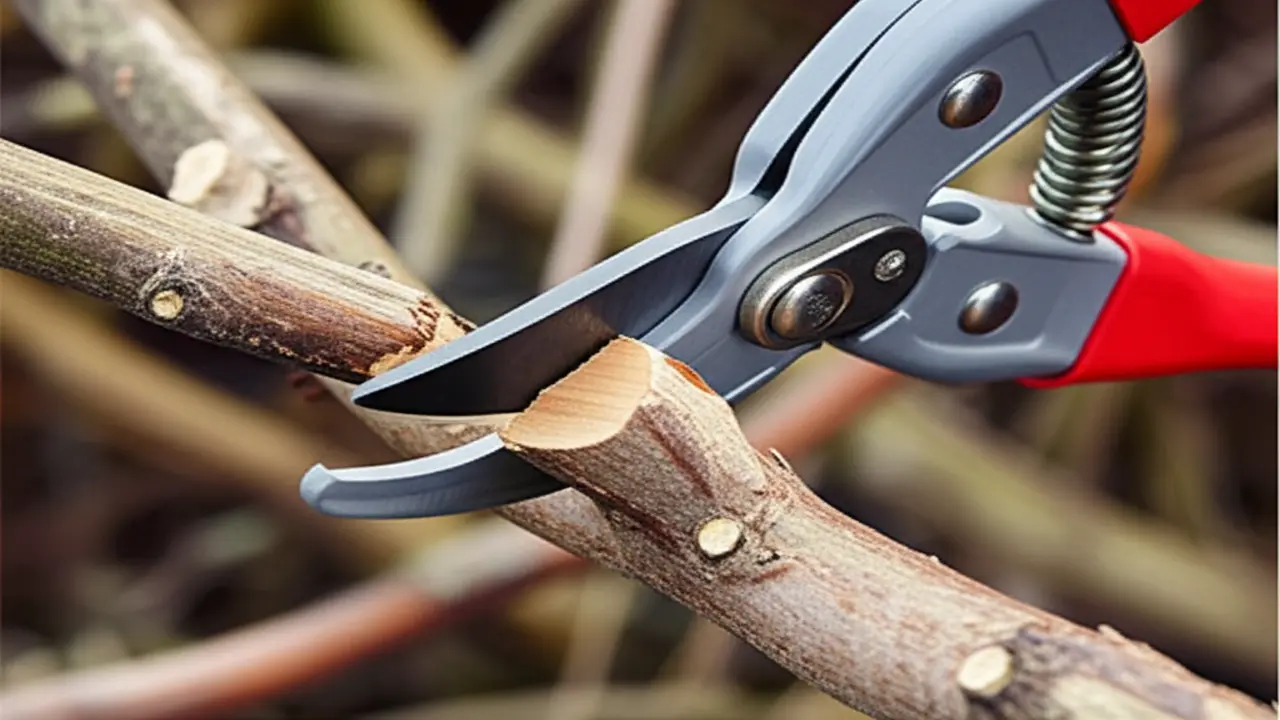
2. Anvil Pruning Shears: Design, Function, and Best Use Cases
The true strength of anvil shears lies in specific scenarios where cutting power is more important than a clean cut. They are the superior tool for:
* Dead and Dry Wood: Effortlessly cutting through brittle, dead branches that might jam or damage bypass blades.
* Tough, Woody Stems: Handling hardened, old wood on shrubs and trees that require significant force. These are often considered the best pruning shears for thick branches that are no longer living.
* General Garden Cleanup: Quickly breaking down tough, discarded plant material for disposal or composting.
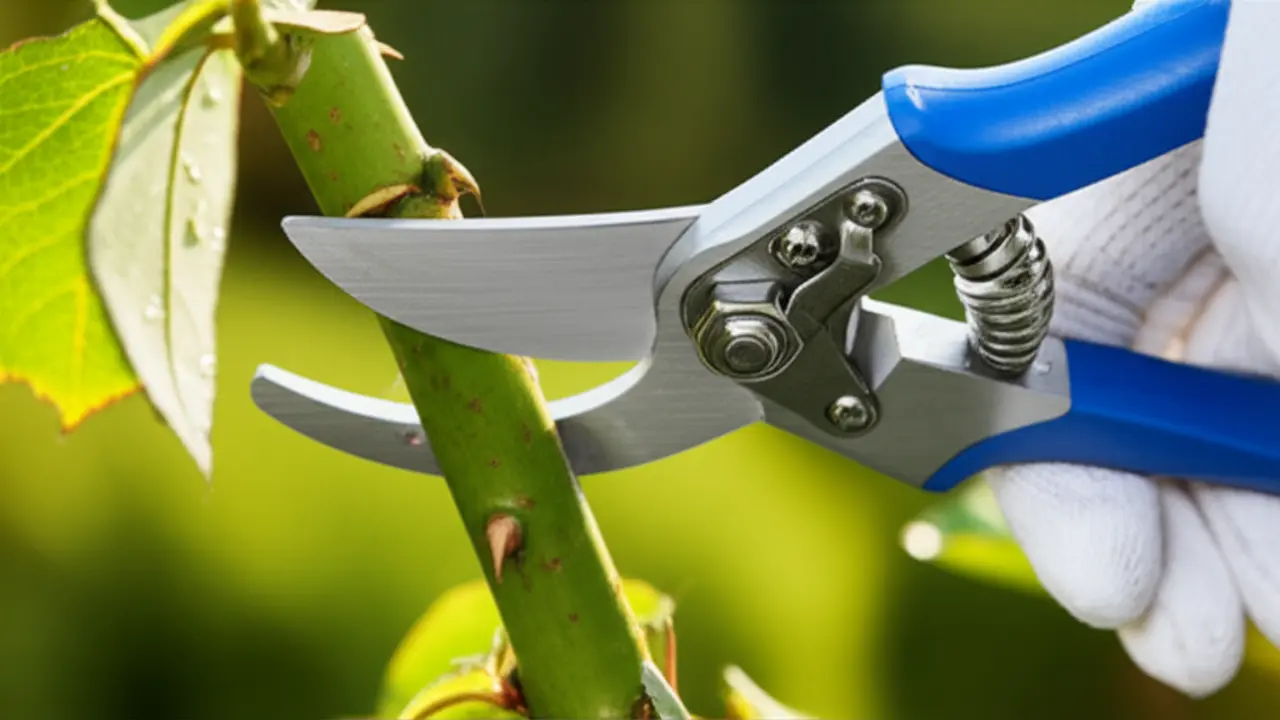
3. Bypass Pruning Shears: Design, Function, and Best Use Cases
As of 2025, bypass shears remain the top choice for specific tasks where plant health is the priority. Their best use cases include:
– Shaping delicate shrubs and trimming rose bushes.
– Deadheading flowers to encourage new blooms.
– Pruning young, green wood on trees and perennials.
In the anvil vs bypass pruning shears debate, bypass models are the clear winner for any task involving live, growing tissue where a clean cut is paramount.
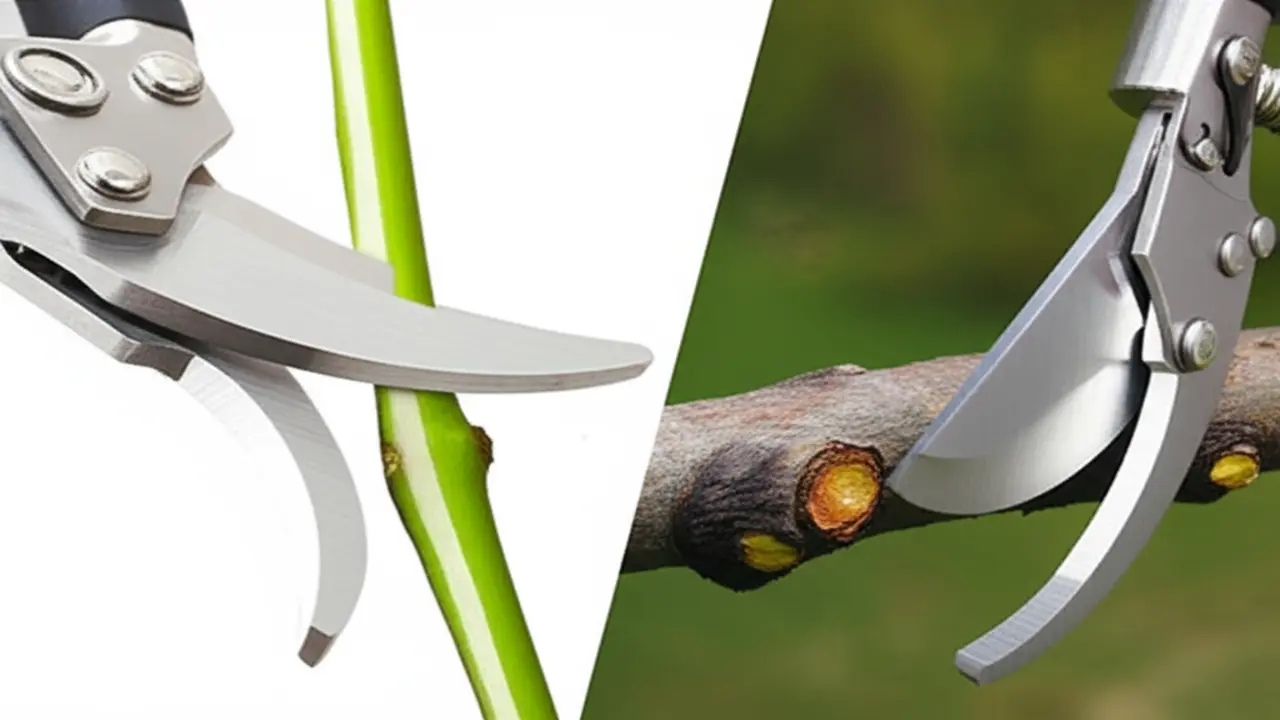
4. Direct Comparison: Anvil vs. Bypass Pruning Shears
5. Expert Advice and Recommendations
However, professionals always keep anvil shears for specialized situations. When dealing with dead, dry, or brittle branches, an anvil pruner is the superior tool. Its crushing action, where a single blade closes against a flat surface, easily powers through tough, dead wood without twisting or damaging the blade. Using a bypass pruner on such material can dull the blades or even bend them. For serious gardeners managing a variety of plants, having both types is not a luxury but a necessity. To dive deeper into what the pros use, you can explore our professional pruning shears guide for more detailed recommendations.
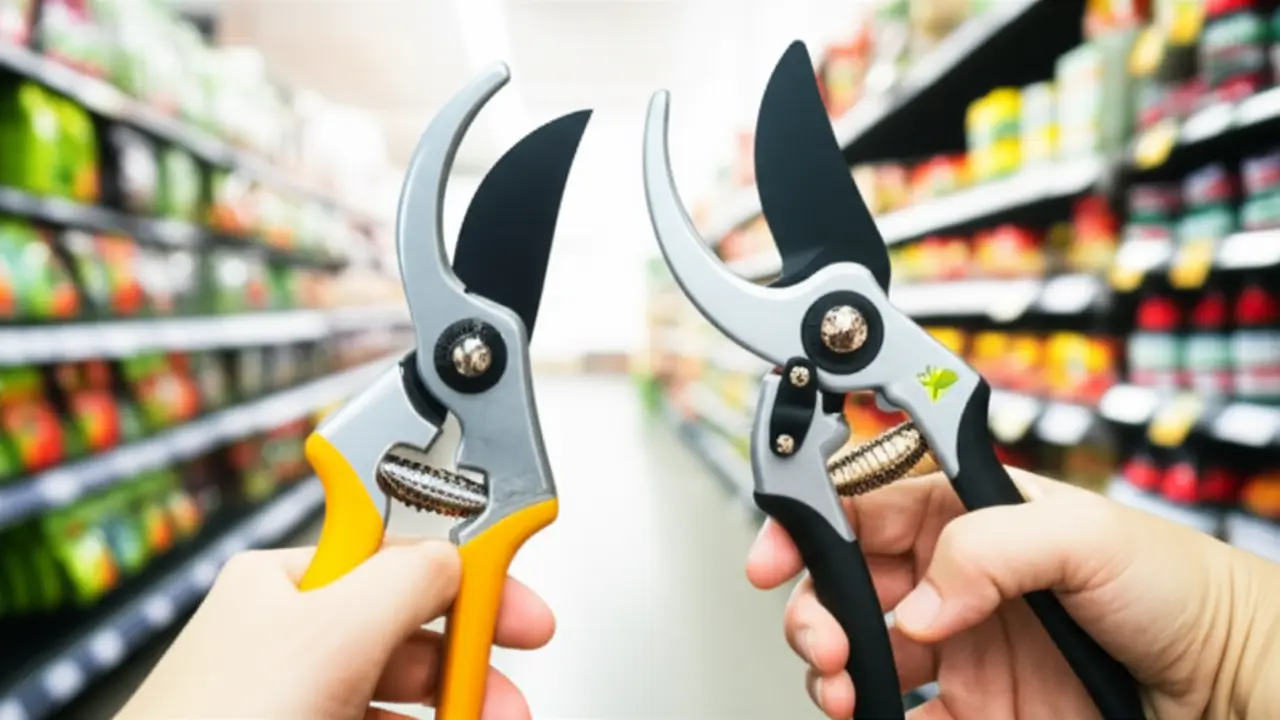
6. Key Features to Consider When Buying
Ergonomics are crucial for preventing strain during long pruning sessions. Look for handles that fit the size of your hands. Many models now offer rotating handles or multiple grip sizes. Handles made from forged aluminum are both lightweight and strong, while non-slip soft-grip coatings prevent blisters and improve control, especially when working in damp conditions. A well-balanced pruner, where the weight is evenly distributed, will feel less cumbersome and reduce fatigue in your wrist and forearm, making your gardening tasks more enjoyable.
The blade is the business end of your shears. High-carbon steel is a popular choice because it holds a sharp edge exceptionally well, but it requires diligent cleaning to prevent rust. Stainless steel blades are more corrosion-resistant but may need sharpening more frequently. Many premium shears feature blades with a non-stick coating like PTFE (Teflon) or a hardening treatment like Titanium nitride (TiN). These coatings reduce friction for smoother cuts and make cleanup easier. Regardless of the material, knowing how to sharpen pruning shears is a vital skill for maintaining peak performance.
Finally, always check the cutting capacity, which is typically listed in the product specifications as a diameter (e.g., 3/4 inch or 20mm). Be realistic about your needs. If you primarily prune roses and small perennials, a standard 1/2-inch to 3/4-inch capacity is sufficient. Attempting to cut branches larger than the tool’s designated capacity can damage the blade, bend the handles, or strain your hands. For more demanding jobs, investing in a pair of pruning shears for thick branches or even loppers is the correct and safer choice.
7. Frequently Asked Questions (FAQs)
* When Should I Use Each Type of Shear?
Use bypass shears for clean cuts on living plants. The scissor-like action is perfect for pruning roses, shaping shrubs, and cutting green stems without crushing plant tissue. Anvil shears are best for dead, dry, or brittle wood. Their crushing action powers through tough branches but can damage live stems, slowing down the healing process.
* Can Bypass Shears Replace Anvil Shears, or Vice Versa?
Not ideally. Using bypass pruners on hard, dead wood can misalign or nick the blades, reducing their effectiveness for precision cuts later. Conversely, using an anvil pruner on a live branch will crush the stem’s vascular system, potentially killing the stalk back further than intended and inviting disease. For optimal plant health and tool longevity, it is best to use the right shear for the job.
* Are There Other Pruning Shear Options?
Yes, several alternatives exist for specific needs. Ratchet pruners provide increased leverage in stages, making it easier to cut through thick branches without strain. For gardeners tackling extensive pruning jobs or those with limited hand strength, electric pruning shears offer a powered solution that significantly reduces fatigue.

